Reflections in a Volcanic Lake
Where water paints light
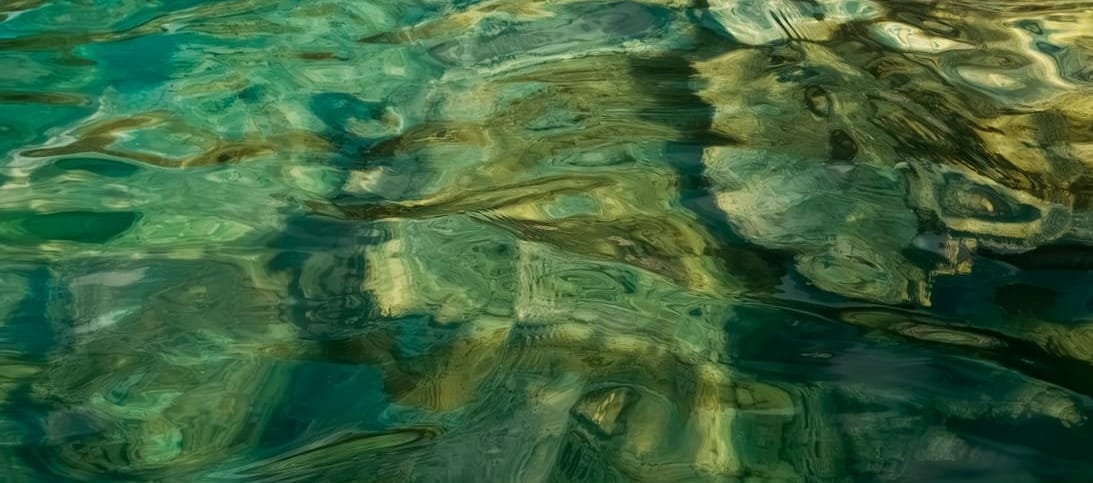
In February of 2017, I found myself balanced in a narrow wooden boat on a hidden lake deep within Chiapas, the southernmost state of Mexico. The water beneath me belonged to Lago Miramar, a tranquil, mineral-rich lagoon lying close to the Guatemalan border, surrounded by a lush wilderness that felt endless. It was my first — and might be my only — visit there, but the image captured that day has lingered ever since, settling into memory like sediment into quiet water.
The route had been long and slow, a gentle unraveling of time, roads winding through small villages, across half-hidden bridges, past tiny roadside shrines adorned with candles and flowers. It was a landscape of subtle whispers: the humid fragrance of the jungle, birdsong filtered through heavy leaves, children playing on the fringes of roadsides, waving shyly at passing cars. Chiapas felt quiet, generous in its silence, a place of soft welcomes and long pauses.
Beauty, like memory, is fluid, ever-changing, never finished. What we witness at any moment is merely one reflection, one interpretation, subject always to movement and transformation.
When we finally arrived at Lago Miramar, I remember stepping from our small car into warmth that felt like an embrace. The lakeshore was simple — a dirt path that opened toward a modest dock where several wooden balsas, rafts built from 12-inch poles lashed together, waited patiently. The lake shimmered gently, jade-green, reflecting jungle canopies and limestone cliffs stained brightly with orange and ochre mineral deposits, vivid against the lush background.
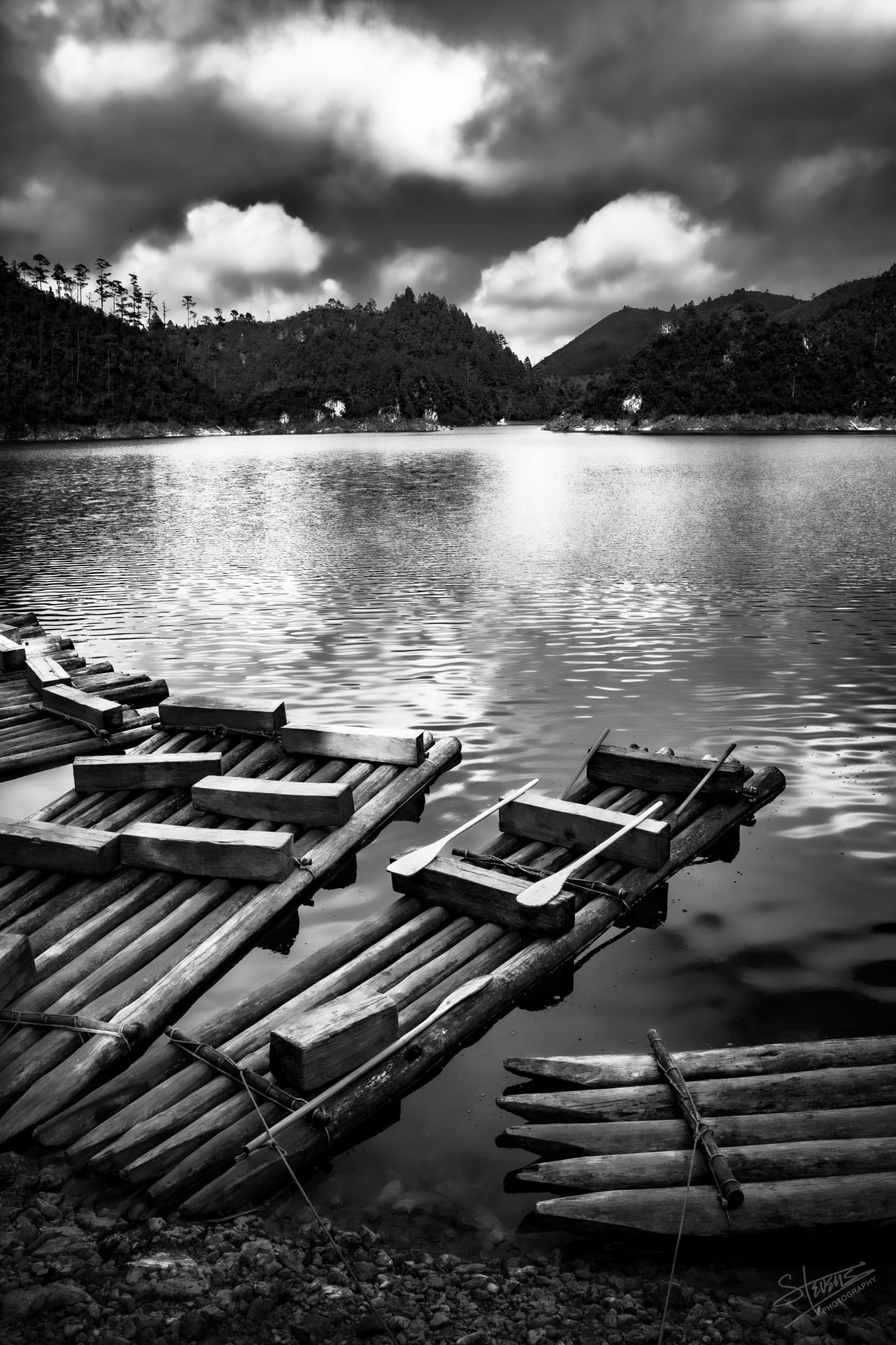
We boarded one of these slender rafts. Our guide — a man whose calm confidence and quiet demeanor spoke of deep familiarity with this place — pushed away from the dock with his paddle, propelling us forward so gently it seemed he barely disturbed the water’s mirror-like surface. From my seat, the lake felt alive, conscious almost, breathing slowly beneath us.
I stood up carefully, not to be reckless, but for a higher angle to better witness the lake’s quiet revelation. Others in the boat murmured gently, urging caution, but there was no sense of rebellion in my stance — only wonder. The lake was mesmerizing. Standing upright gave me perspective, allowed my eyes and lens to drink deeply of reflections that spilled across the water's surface.
It is often this way when photographing: to hold oneself just outside of ordinary balance, suspended slightly beyond comfort, not for the thrill of risk, but for clarity, for a vantage that dissolves boundaries between seeing and feeling. The balsa rocked gently beneath me, its motion rhythmic, soothing, never threatening. My body responded instinctively, adjusting weight from foot to foot as easily as breath moves in and out of the lungs.
I often framed nothing specific — only color, texture, rhythm. The reflections on the water weren't simple mirror-images; they were translations, fluid interpretations of stone, leaf, sky, and sun. Each dip of the paddle stirred new patterns into being, a slow choreography of gold merging with green, sunlight shimmering into ochre and copper. These patterns had no defined edges, no recognizable form, yet their beauty was complete, a vivid abstraction that spoke clearly in its own poetic tongue.
Later, when reviewing these photographs, one image in particular seized me, suspended me again in that place, that moment. Its composition was unplanned, the exposure imperfect, but its essence captured exactly what I felt: profound calm, gentle awe. It reminded me deeply of my paintings — those abstract works I have created over the years where form emerges from layered colors, where meaning gathers gradually in quiet spaces. This photograph felt like one of those canvases, painted by water and light rather than pixels and digital brushes.
Reflecting now on Lago Miramar, I understand better why this place has stayed with me. It is a lake born from geological upheaval, nestled within a landscape marked by ancient movements of earth and water. Chiapas is filled with lakes formed from volcanic or tectonic shifts — some catastrophic, some gradual. These formations become quiet reminders that beauty often arises from transformation, from shifts and ruptures. Lago Miramar is no exception, bearing mineral-rich cliffs whose bright stains come from deep beneath the surface, a slow bleeding of iron and copper, minerals forged in the planet’s restless core.
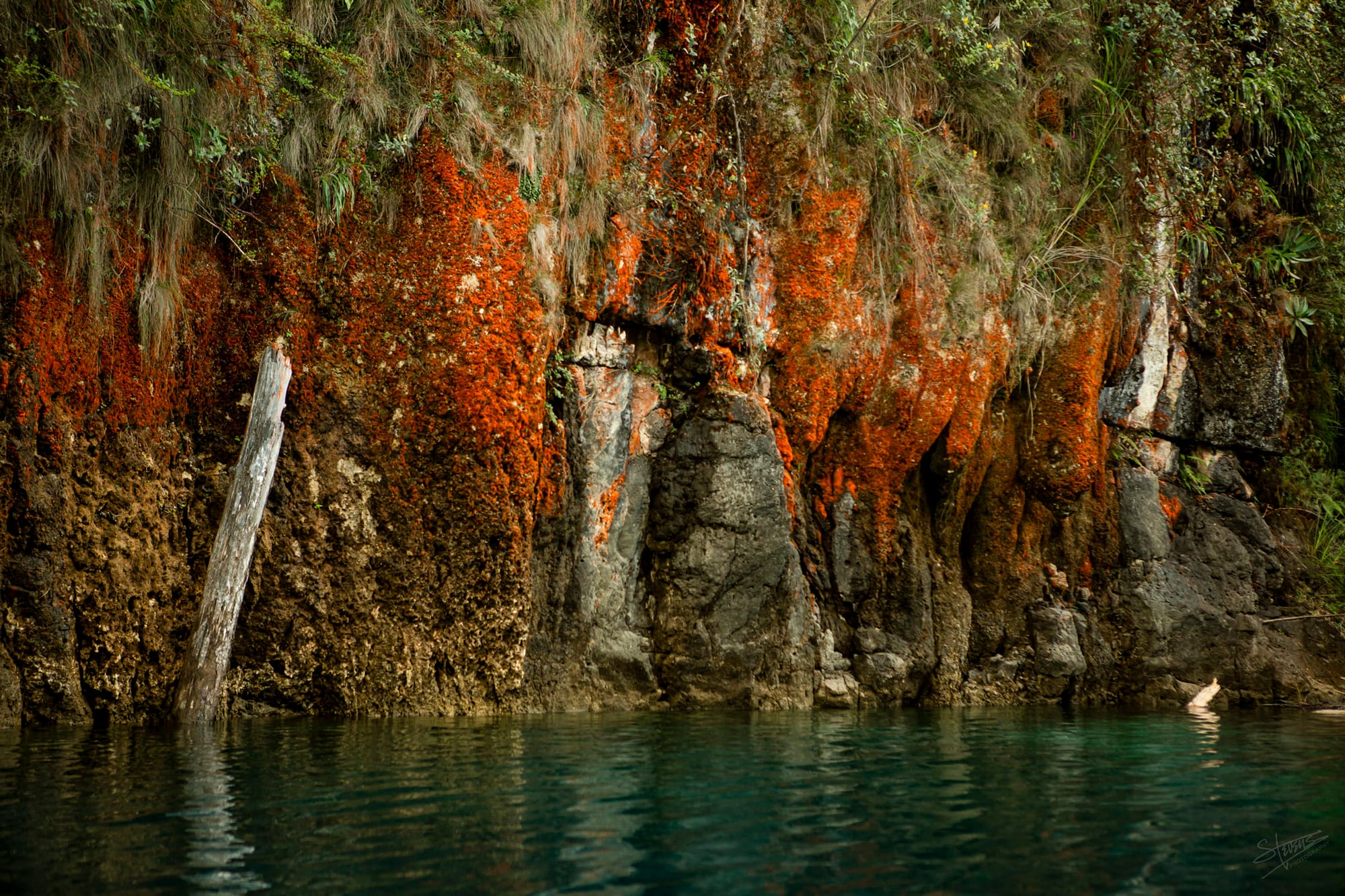
Yet that geological story remained peripheral that day. The primary sensation was simpler: gratitude for being there, gratitude for that particular arrangement of light and color, gratitude for the gentle woman guiding us, her paddle dipping quietly, reverently into water that held centuries of rain, mineral, and memory.
We had traveled previously through San Cristóbal de las Casas, a beautiful colonial town whose cobbled streets and colorful markets had already taught me something about the vibrancy of Chiapas — its woven fabrics, its bright walls, its lively plazas filled with artisans and musicians. I recall briefly stepping across the Guatemalan border to find markets bursting with handwoven fabrics dyed in rich hues — colors that echoed now, softly, in Lago Miramar’s reflections. These fabrics and these waters spoke the same language of color and light, albeit in different dialects.
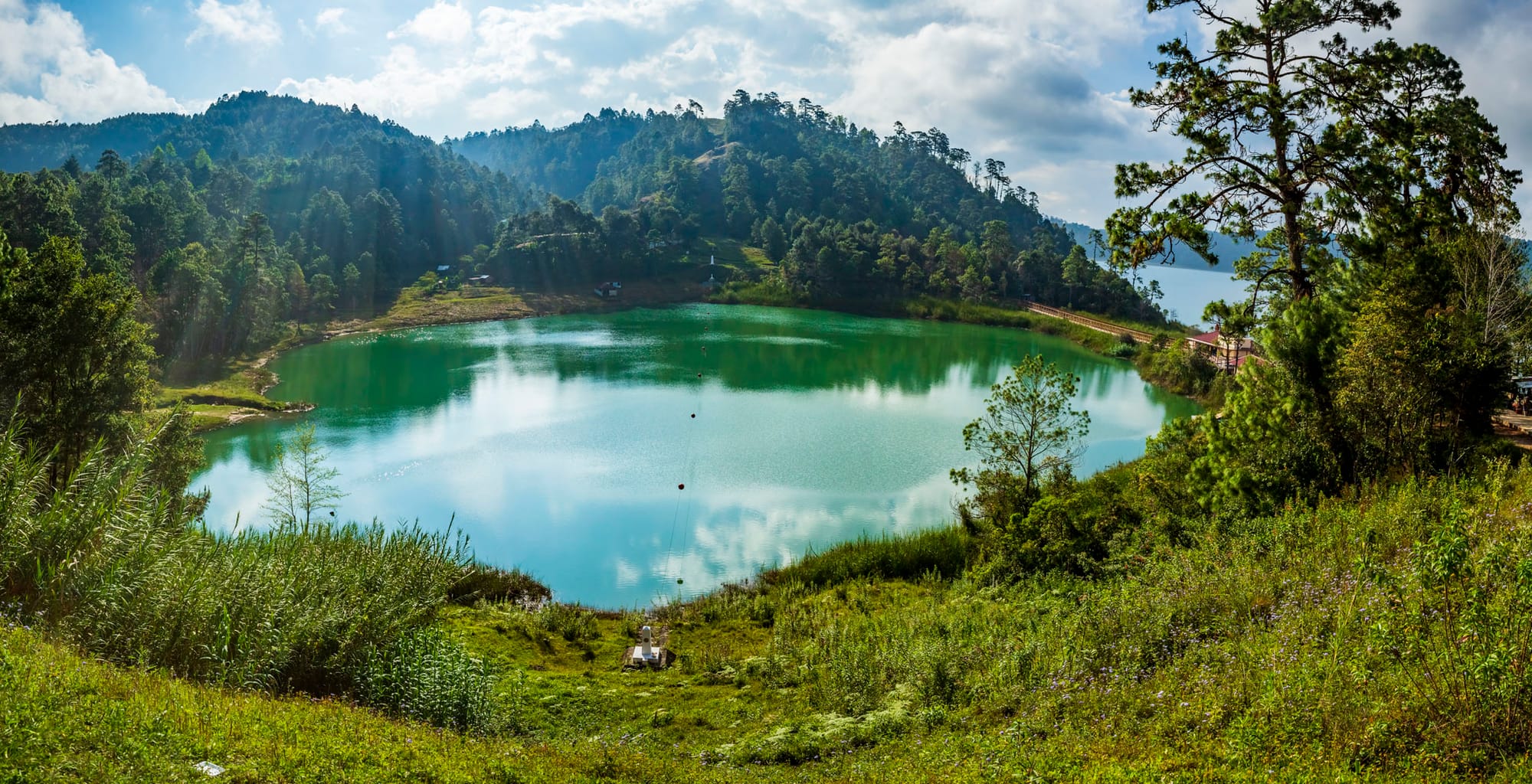
I have always regretted my habit of carrying too much equipment, overburdening myself with lenses and bags, neglecting notebooks that might have recorded details or clarified timelines. On this journey, too, practicalities distracted me from meticulous note-taking, leaving memories floating untethered in time, held together only by sensations, colors, and fragments of visual poetry.
Yet perhaps that lack of precision is fitting. Lago Miramar offered itself gently, subtly, defying strict order or categorization, preferring instead to be remembered poetically rather than historically, and perhaps that’s why the photograph continues to hold such resonance — it captures not a precise moment or precise object but a particular state of being: openness, receptivity, wonder. It captures a quiet ecstasy, a gentle rapture in the presence of something indescribably beautiful, a willingness to stand carefully, vulnerably, just on the edge of balance.
The image doesn’t provide certainty. Its subject—if one insists on naming one — is elusive, ephemeral. It asks viewers to soften their eyes, to surrender the impulse to identify, categorize, explain. Like poetry or abstract painting, it invites participation rather than passive viewing. To truly appreciate this image requires a gentle surrender, a willingness to move beyond the literal into a place where feeling and seeing become indistinguishable.
This photograph from Lago Miramar continues to remind me that beauty, like memory, is fluid, ever-changing, never finished. What we witness at any moment is merely one reflection, one interpretation, subject always to movement and transformation. That day in February, balanced gently above Lago Miramar’s reflective surface, camera in hand, I captured something fleeting yet eternal: the quiet alchemy of water turning sunlight into verse.
I returned home carrying that image, carrying also the quiet rapture it evokes, reminded continually that the world is full of hidden mirrors, waiting patiently for someone willing to pause, to look carefully, and to receive the gift of seeing clearly — if only for a moment—something beautiful, profound, and gently miraculous.
— Lawrence
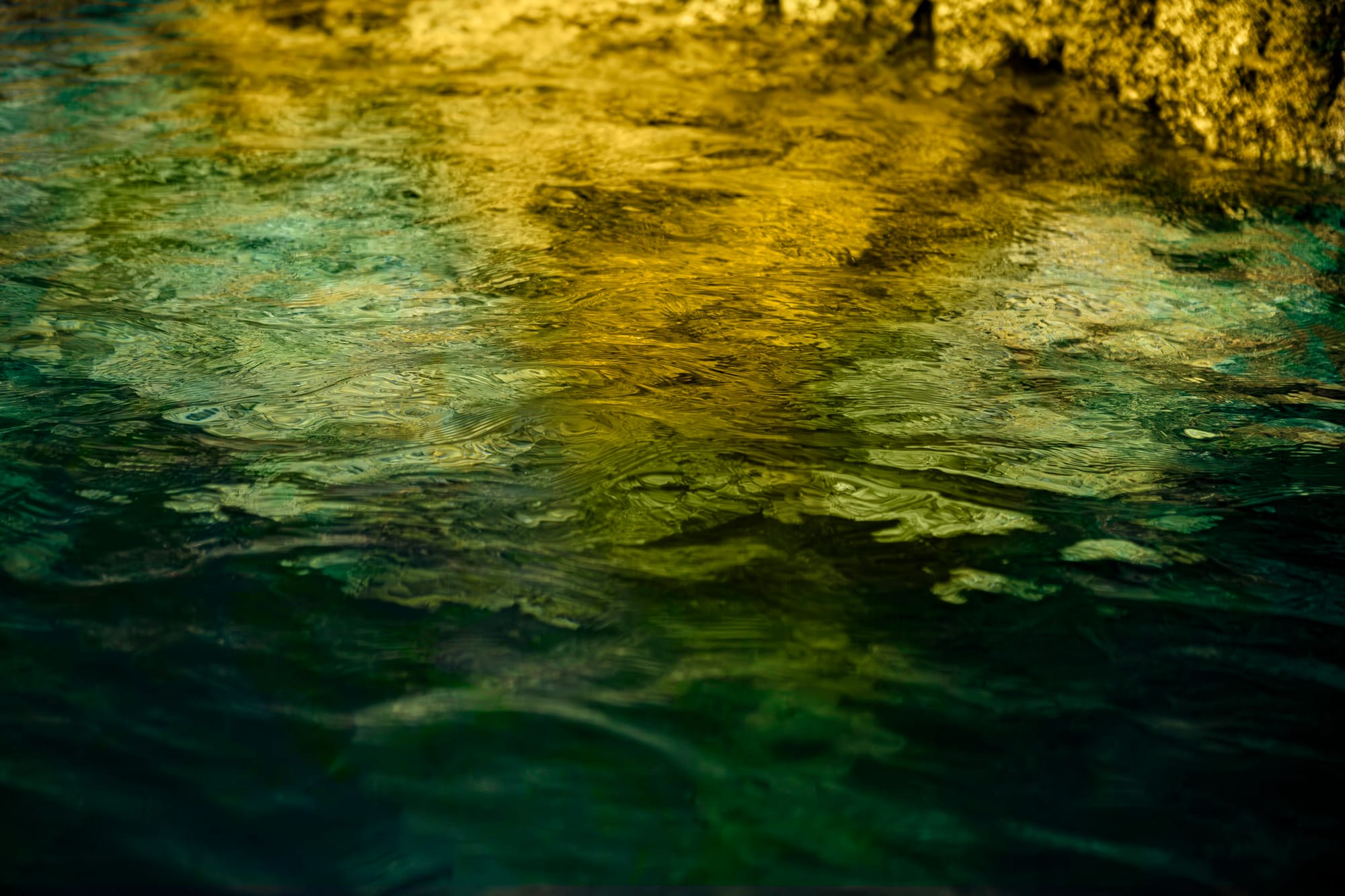
Thanks for reading Still Stories! Subscribe for free to receive new posts and support my work.

